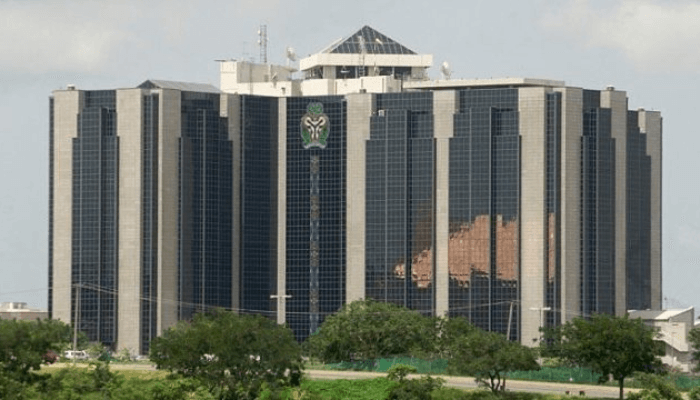CBN’s aggressive mop-up slashes bank deposits by 42%
…Apex bank eyes lower inflation, liquidity
Commercial banks’ deposits with the Central Bank of Nigeria (CBN), through the Standing Deposit Facility (SDF), declined by 42.3 percent between October 2 and October 8, following an aggressive liquidity mop-up by the apex bank to tame inflation.
Bank deposits with the CBN plunged to N3.5 trillion as of Wednesday, October 8, 2025, compared to the peak of N6.07 trillion recorded on October 2, 2025, marking a 42.3 percent decline, the CBN data said.
As part of its liquidity control measures, the CBN, within two days, mopped up about N4 trillion through Open Market Operation (OMO) sales. A breakdown of the OMO auction showed that N3.03 trillion bills were sold to investors, including banks, on Tuesday, while N998.10 billion worth of bills was sold on Monday.
Consequently, commercial banks that had been piling up their excess liquidity with the CBN participated actively in the OMO auction, resulting in a sharp decline in their deposits with the regulator.
The OMO sales marked a one-month high since September 3, 2025, when the CBN conducted the last auction worth N620.65 billion.
Ayokunle Olubunmi, head of Financial Institutions Ratings at Agusto & Co., affirmed that the OMO sale dampened the deposit of banks with the CBN.
Commercial banks’ deposits with the CBN had maintained a steady increase, rising to an all-time high of N6.07 trillion on October 2, 2025, after the OMO repayment worth N1.2 trillion in September. The surge in bank deposits with the CBN was boosted by excess liquidity from the Federation Account Allocation Committee (FAAC) disbursements and OMO repayments.
Read also: Trust is non-negotiable for Nigeria’s Fintech transformation – CBN
At the same time, the CBN cautiously reduced its Monetary Policy Rate (MPR), the benchmark rate, by 50 basis points to 27 percent from 27.50 percent in a move aimed at boosting economic growth and sustaining foreign portfolio investments in the country.
Olayemi Cardoso, governor of the Central Bank of Nigeria, announced the decision at the end of the two-day Monetary Policy Committee (MPC) meeting in Abuja, which was attended by 12 members of the committee.
The committee delivered a set of complementary measures that balanced monetary easing with targeted liquidity controls. In order to stimulate bank lending and support credit to the private sector, the MPC reduced the Cash Reserve Requirement (CRR) for commercial banks to 45 percent, down from 50 percent, while retaining the CRR for merchant banks at 16 percent. At the same time, however, it introduced a 75 percent CRR on non-Treasury Single Account (TSA) public sector deposits, which serves as a tightening tool to mop up excess liquidity from fiscal injections.
Razia Khan, managing director and chief economist for Africa and the Middle East at Standard Chartered Bank, said the new requirement sends a strong policy signal but may not have significant tightening effects since much of the liquidity overhang in the system stems from maturing OMO, rather than public sector deposits.
She emphasised that the evolution of the CBN’s OMO policy will be a more important indicator of the monetary stance going forward. Khan added that the CBN sees sustained disinflation in the months ahead as a result of previous policy choices, hinting at the possibility of further easing in the future.
According to analysts at Comercio Partners, the asymmetric (now symmetric) corridor around the MPR has been set at +250/-250 basis points. This implies that compared with July’s asymmetric corridor of +500/-100 basis points, the now symmetric corridor signals a deliberate shift in monetary incentives.
Given the rate cut by the MPC, the upper band, which sets the rate at which the CBN lends to banks, is lower, reducing borrowing costs, while the lower band, which determines the rate banks earn on deposits with the CBN, is also lower, making it less attractive to park funds. By lowering the return on idle deposits while offering cheaper funding, the CBN encourages banks to lend more to the real economy rather than hold excess liquidity.
This discourages the parking of funds with the CBN and pushes banks to lend more to the productive sectors. The CRR for merchant banks remains at 16 percent, and the liquidity ratio stays at 30 percent, giving merchant banks more room to deploy funds while commercial banks remain constrained.
According to Cardoso, the MPC adjusted the asymmetric corridor to improve the efficiency of the interbank market and enhance market stability.
Analysts at United Capital Plc Research (UCR) project an average inflation rate of 16.07 percent for the fourth quarter (Q4) of 2025, assuming no external shocks exert additional upward pressure on consumer prices.
United Capital Research believes this outlook could encourage the Monetary Policy Committee (MPC) of the CBN to consider another interest rate cut at its upcoming meeting scheduled for Monday, November 24, and Tuesday, November 25, 2025.

